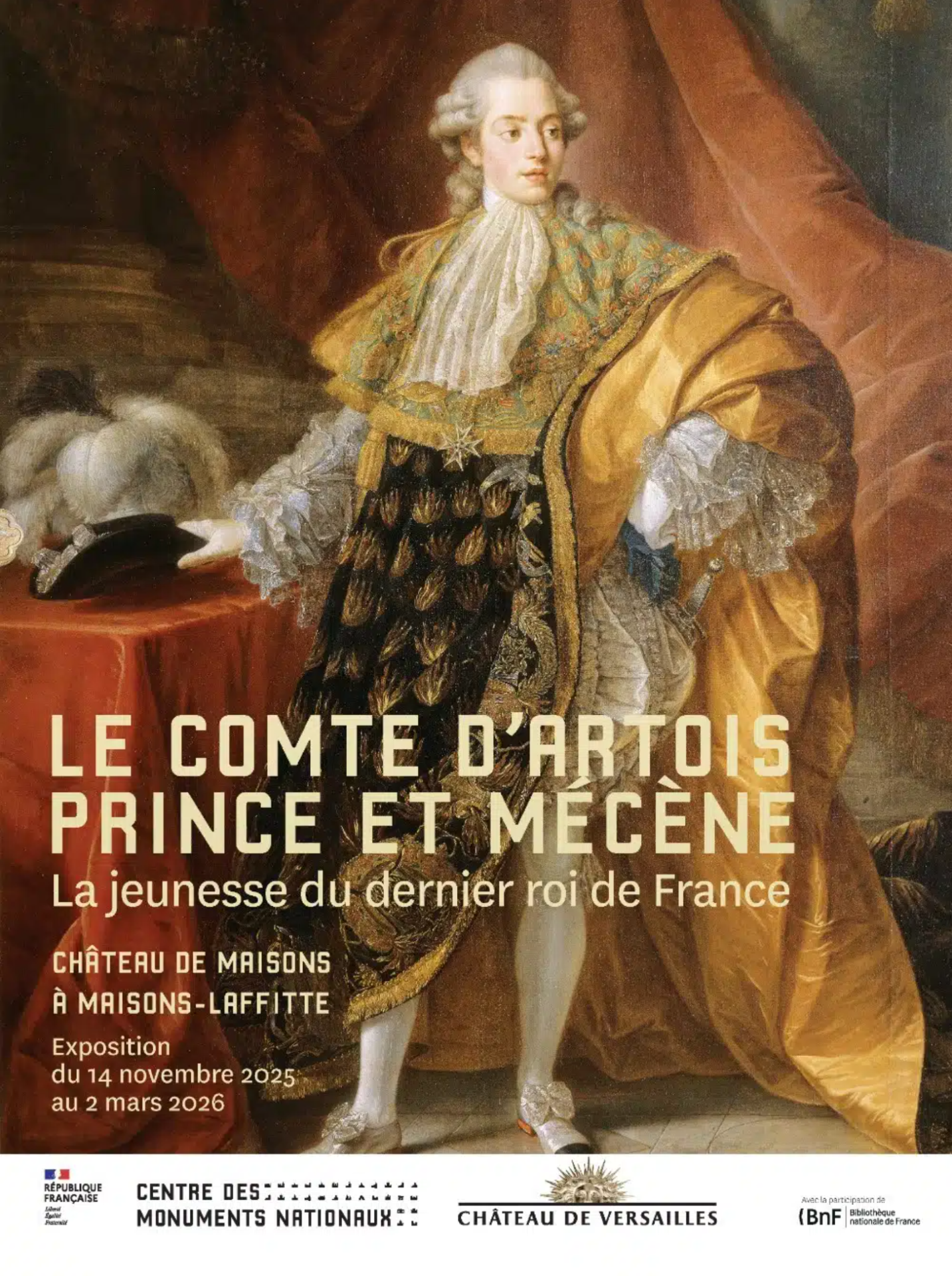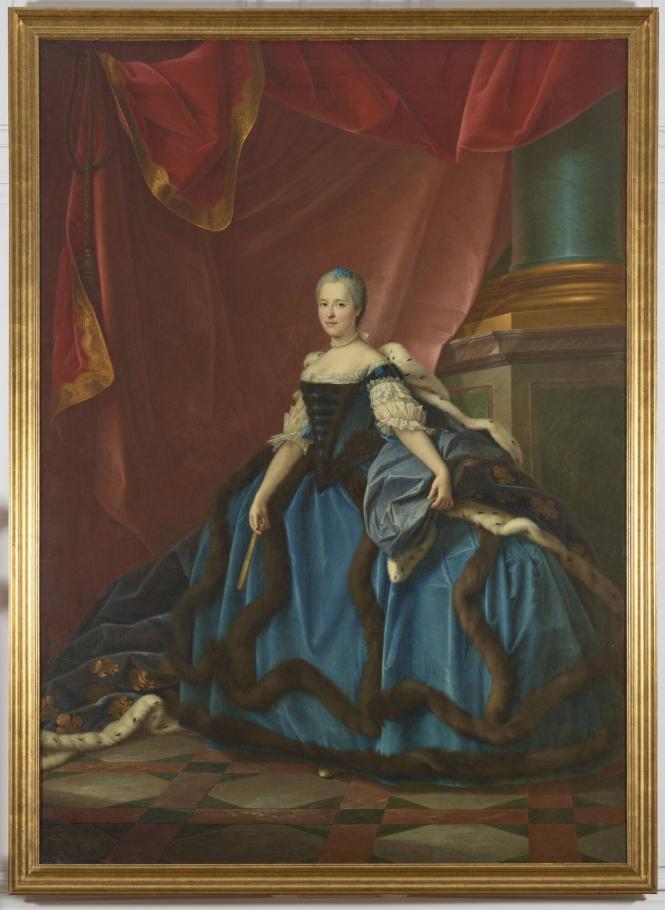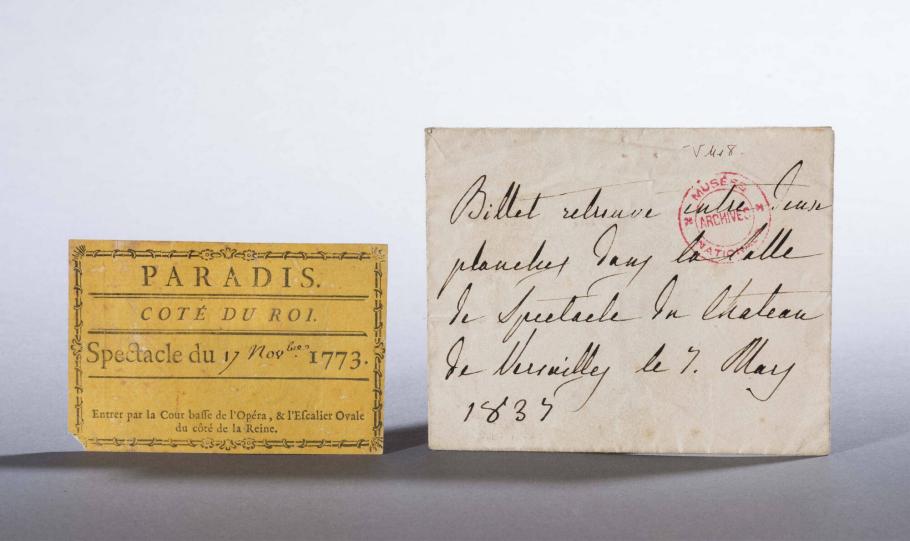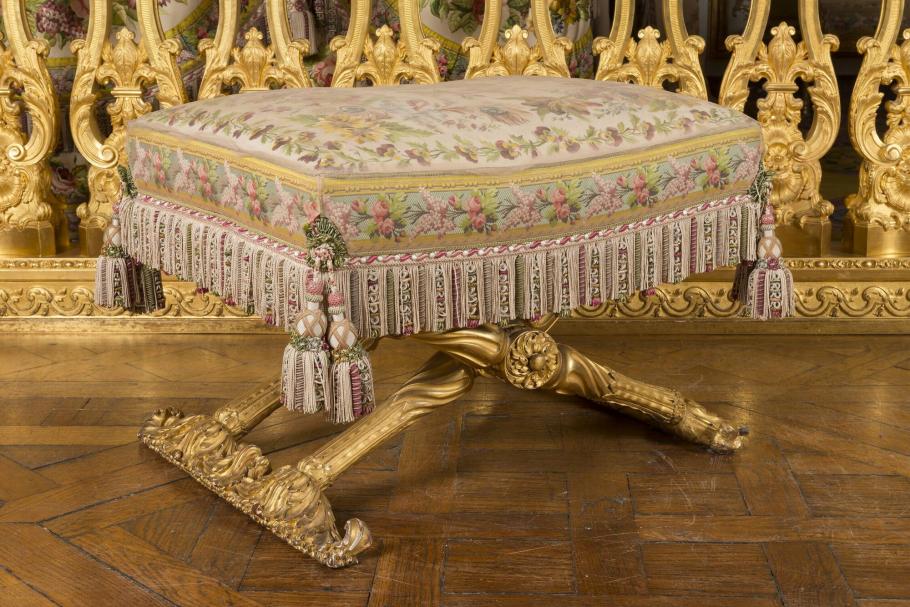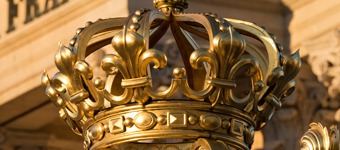The result of a partnership between the Centre des Monuments Nationaux and the Palace of Versailles, this exhibition traces the life of the Count of Artois, brother of Louis XVI and the future Charles X, through his residences, his artistic projects, and his princely passions. From the splendor of the Château de Maisons to his exile in 1789, it reveals the journey of a refined prince at the heart of the 18th century.
From 14 November 2025 to 2 March 2026 The Count of Artois, prince and patron. The youth of the last king of France
The exhibition
An immersive historical experience at the heart of the 18th century.
The exhibition ‘The Count of Artois, Prince and Patron. The Youth of the Last King of France’ begins with a presentation of the Château de Maisons in the 18th century, then traces the prince’s life from his birth to his exile. His personality, his life, his patronage, and his taste are explored through a selection of masterpieces of great variety (graphic arts, paintings, works of art, sculptures, furniture, curiosities, books). The exhibition also highlights the prince’s interest in architecture, as he was the last owner of the Château de Maisons under the Ancien Régime.

The exhibition at the château de Maisons
© EPV / Thomas Garnier
Exceptional loans
Sourced primarily from the collections of the Palace of Versailles, the exhibition also benefits from prestigious loans granted by the National Archives, the National Library of France, the Louvre Museum, the Mobilier National, the Château de Fontainebleau, the Carnavalet Museum, the Musée de l’Armée - Invalides, the municipal library of Versailles, the Fine Arts Museums of Amiens and Reims, as well as from private collections.
The count of Artois, futur charles x
Reputed for his frivolous spirit and taste for luxury, the Count of Artois was both an attractive and controversial figure, eccentric yet conservative. Charles-Philippe of France, known under the title Count of Artois, was born in Versailles on 9 October 1757. He was the grandson of Louis XV and the brother of Louis XVI and the future Louis XVIII. He became King of France upon the death of the latter in 1824, under the name Charles X, and soon emerged as the representative of the most uncompromising Catholic faction. He was consecrated at Reims the following year. The July Ordinances of 1830, which restricted freedom of the press and dissolved the Chamber, triggered an uprising that became known as the Three Glorious Days. Faced with the revolt, Charles X abdicated and left France. His exile led him first to Scotland, then to Prague, and finally to Istria (a peninsula shared by Slovenia, Croatia, and Italy), where he died on 6 November 1836.
A taste for innovation
From an early age, the Count of Artois distinguished himself through his marked interest in splendor and refinement, coupled with an unrestrained passion for the modern currents of art and fashion. He was very close to Marie-Antoinette at the beginning of her reign, and they shared this common enthusiasm. However, unlike the queen, constrained by the demands of court etiquette, the Count of Artois enjoyed far greater freedom to adopt and promote the latest trends.

Charles-Philippe of France, count of Artois
© Palace of Versailles / Christophe Fouin
The château de Maisons
The château de Maisons, a masterpiece by François Mansart, was built from 1633 onward for René de Longueil, a magistrate of the Parliament of Paris. Designed as a pleasure residence, it became, as early as the 17th century, a place admired by the court. King Louis XIV himself visited it several times. In the following century, the estate entered a new era of splendor when, in 1777, the Count of Artois acquired it. He commissioned the architect François-Joseph Bélanger to transform the château with ambitious embellishment projects, refined interior decoration, and modern gardens. The count intended to make it both a setting for entertainment and a symbol of aristocratic refinement. But the upheavals of 1789 brought the work to a halt, and the prince’s property was confiscated.

View of the château de Maisons
© EPV / Thomas Garnier
After the Revolution, the château passed through various hands, from Marshal Lannes under the Empire to the banker Jacques Laffitte, who subdivided the park. The château was saved from ruin at the beginning of the 20th century thanks to its listing as a historic monument and its acquisition by the State. Today, restored and open to the public, the Château de Maisons remains a jewel of the Grand Siècle and still bears the mark of the Count of Artois’s lavish ambitions, whose tenure constitutes one of the most brilliant episodes in its history.
A dialogue between collections
The partnership established in 2013 between the Centre des Monuments Nationaux and the Palace of Versailles creates a dialogue between collections that are too often overlooked and major landmarks of France’s national heritage. These temporary exhibitions allow both institutions to pool their resources in order to offer as many people as possible the opportunity to discover, or rediscover, chapters of French history within the prestigious setting of national monuments.
At the end of the exhibition, the CMN and the Palace of Versailles concluded a deposit agreement that will allow the return, in situ, of works that were once at Maisons during the time of the Count of Artois, seized during the Revolution and later kept at Versailles.
Here are some of the exhibitions already organized as part of this partnership:
around the exhibition
Cultural program
The Château de Maisons offers a cultural program featuring:
- Guided tours led by lecturers or by the exhibition’s curators
- Conferences with specialists to deepen understanding of the period and the prince’s life
- Thematic tours focusing on the art of entertaining in the 18th century
- Sung tours, evening concerts, and lively balls for the whole family
The exhibition catalogue
The exhibition catalogue ‘The Count of Artois, Prince and Patron. The Youth of the Future Charles X’ will be available starting in November at the price of €16.
Activity booklet
An activity booklet for children specially made for the exhibition will soon be available.
Curator
This exhibition is organised by the Centre des monuments nationaux and the public institution responsible for the Palace, Museum and National Estate of Versailles.
- Laurent Salomé, director of the National Museum of the Palaces of Versailles and Trianon
- Vincent Bastien, scientific collaborator at the Palace of Versailles
- Benoît Delcourte, chief curator at the Palace of Versailles
- Raphaël Masson, chief curator at the Palace of Versailles
- Clotilde Roy, responsible for enriching the collections of the Centre des Monuments Nationaux
- Gabriel Wick, doctor of history
pratical information
Dates: from 14 November 2025 to 2 March 2026 (closing on 25 December and 1 January).
Ticket prices:
- 9€ (full price).
- A preferential price of 7,5€ is offered to the subscribers of the '1 Year at Versailles', to visitors with the membership card from the Society of Friend of Versailles, as well as the visitors with the Passport ticket for the Palace of Versailles valid during the entire period of the exhibition.
Opening times: open every day except on Thuesday, from 10 am to 6 pm (last admission at 5:30 pm)
Location: château de Maisons, 2 avenue Carnot, 78600 Maisons-Laffitte.
Access: From Paris, take lines J ou L (Saint-Lazare train station), or RER A at the station 'Maisons-Laffite', then walk around 10 minutes.

Exhibition
The Grand Dauphin (1661-1711), Son of a king, father of a king, but never a king
The Palace of Versailles is presenting an exhibition devoted to the Grand Dauphin, Louis de France, the eldest child of Louis XIV. It traces the life of this often overlooked prince. As heir to the throne, he was the focal point of Bourbon dynastic ambitions, without ever reigning, but his education reflects the destiny which was his due.

From March 25
Virtual Reality: The Sun King’s Lost Gardens
For the first time, the Palace of Versailles is opening its doors for an extraordinary virtual reality (VR) journey back in time! Immerse yourself in 1682 and join André Le Nôtre, Louis XIV’s gardener, on a special tour of specific groves of the gardens which are no existing anymore.

Exhibition
1725. Native American allies at the court of Louis XV
The Palace of Versailles and the Musée du Quai Branly - Jacques Chirac are presenting a new exhibition devoted to the visit by Native American allies to the court of Versailles. In 1725, four Native American chiefs and a Native American woman from the Mississippi valley were received in France on a diplomatic mission and met Louis XV. The exhibition retraces this memorable encounter and explores the links between France and the Indigenous nations of North America in the 18th century.
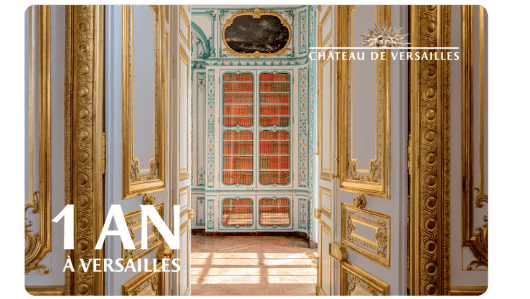
Are you a regular visitor?
The best of Versailles for subscribers! For a whole year, benefit from numerous advantages thanks to the SOLO or DUO cards, and unlimited ticket access from only 65€.
Choose your subscription
The official Palace of Versailles app
The free application of the Palace offers audio tours to accompany your visit to the Estate (Palace, Gardens, Trianon Estate, etc.) as well as an interactive map.
More information


